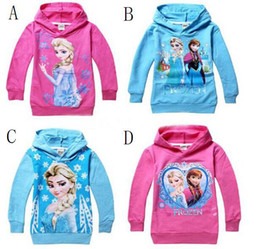September is Life Insurance Awareness Month, and is always a good time to think about if your life insurance policies you own, match your needs. Or if you don’t have life insurance, maybe it’s a good time to begin thinking about taking out a policy. Life insurance companies and products have evolved over time, and perhaps you have some misconceptions about life Insurance in general. Who owns life insurance?
Who owns life insurance?
- Most adults own life insurance; 3 in 5 consumers (59 percent) own some type of life insurance. Having a spouse, or child, is some to the main reasons for securing coverage.
- Only 22 percent of people have both individual and group insurance. Many people don’t understand that their work place life insurance, may not be there for them should they retire, or change employers.
- More adults under 45 owned life insurance in 2016 than did in 2010, while ownership of those over age 45 declined since 2010.
Why do Americans own life insurance?
- More than one third (35 percent) of all households would feel adverse financial impacts
within one month if a primary wage earner died.
- The top three reasons Americans give for owning life insurance in 2018:
- Cover burial and final expenses (91 percent)
- Help replace lost wages/income of a wage earner (66 percent)
- Transfer wealth or leave an inheritance (63 percent)
What prevents people from owning life insurance?
- Many (40 percent) do not know how much coverage they need and what type of life insurance to buy. Millennials in particular, nearly 6 in 10, feel this way. Or people felt that they may not qualify medically, for life insurance. People with Diabetes felt that they would not qualify for diabetes life insurance plans. In reality, life insurance for the diabetes community is easy to qualify for.
- Nearly a quarter of people say no financial professional has approached them for life insurance. Once again, Millennials lead the response here: 43 percent claim they haven’t been approached.
- Most consumers estimate the cost of coverage to be more than three times its actual cost. Almost half of Millennials overestimate the cost at five times the actual amount.
- The top three reasons people do not buy (or do not buy more) life insurance:
- It is too expensive (63 percent) However when people see how little life insurance actually costs, there were pleasantly surprised.
- Other financial priorities (61 percent)
- They already have enough coverage (52 percent)
The life insurance buying process:
- About half of all adult consumers shopping for life insurance visit a life insurance company website and/or sought life insurance information online. Most consumers feel comfortable working with an agent or agency thru email, or over the phone.
- Fifty-two percent of potential life insurance buyers said they would be more likely to purchase life insurance if they didn’t have to go through a physical exam. Due to consumers preferring not to do medical examinations, several life insurance companies are now offering non-medical exam policies.
- Almost 3 in 10 (29 percent) of all consumers say they would research and buy life insurance online, up 7 percentage points from 2016.
- Almost one third of people purchased or attempted to purchase life insurance online.
- Millennials are most likely to want to meet with a financial professional before purchasing life insurance (73 percent), compared with Gen X (64 percent) and Boomers (69 percent).
The impact of social media on life insurance:
- Overall one third of people would ask social media connections for advisor recommendations. Over fifty percent of Millennials said they would do so.
- Four in 10 Gen X consumers and half of Millennials are likely to check recommended financial advisors for a social media presence.
- Almost 40 percent of Millennials and nearly one quarter of Gen X consumers prefer to contact financial advisors via social media
After reading these facts, maybe it’s time to start thinking about your personal life insurance situation. There’s never a bad time to consider the impact life insurance has on you and your family.
I’m a 20-something stay-at-home mother and wife. I have an amazing husband, a beautiful daughter, two loving dogs, and a lazy cat. I wouldn’t change my life for anything! I love to read, listen to music, cook and blog!

[…] good way of securing more cover at a cheaper premium. Take a look at one of my earlier posts about life insurance to find out as much as you can before considering your […]